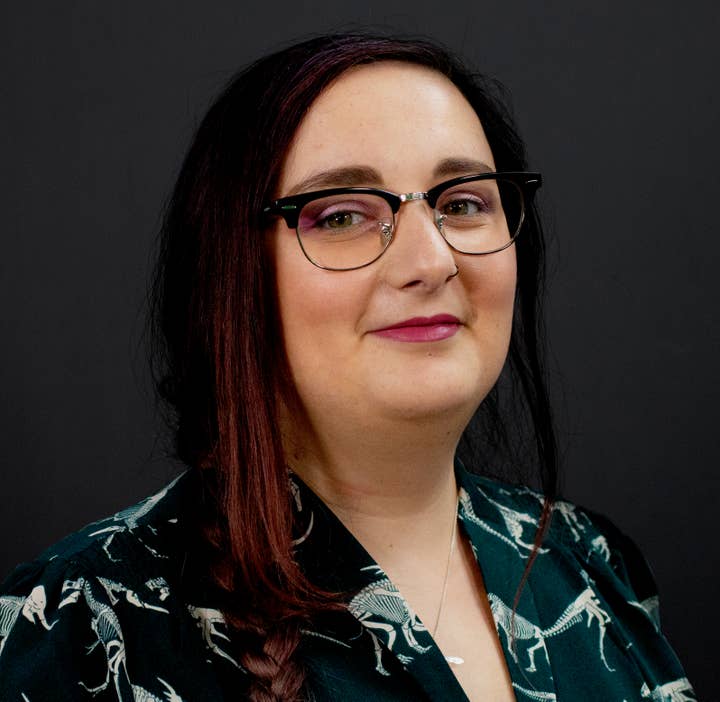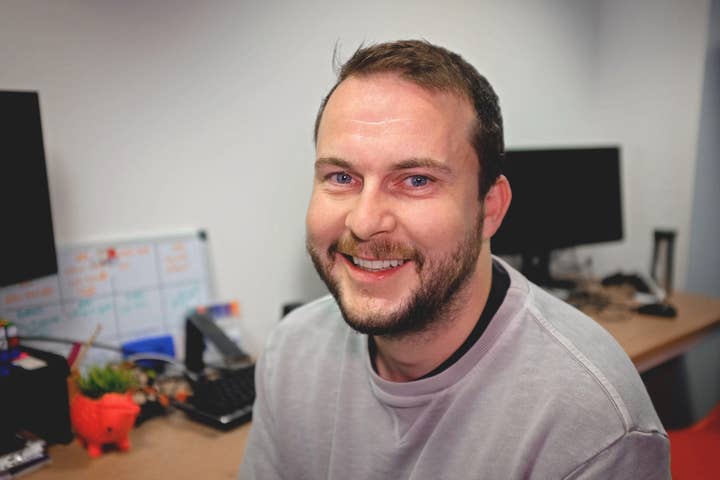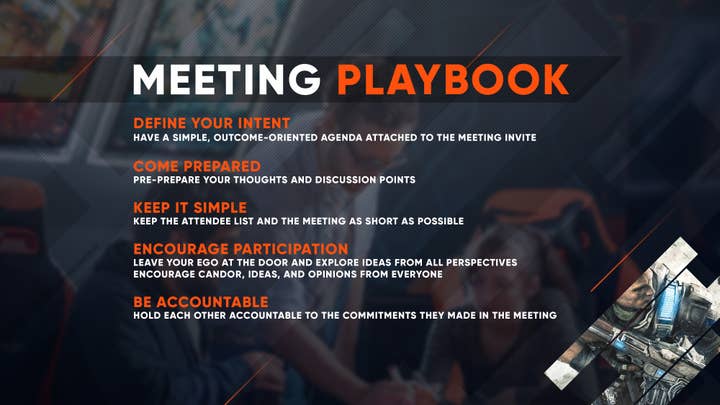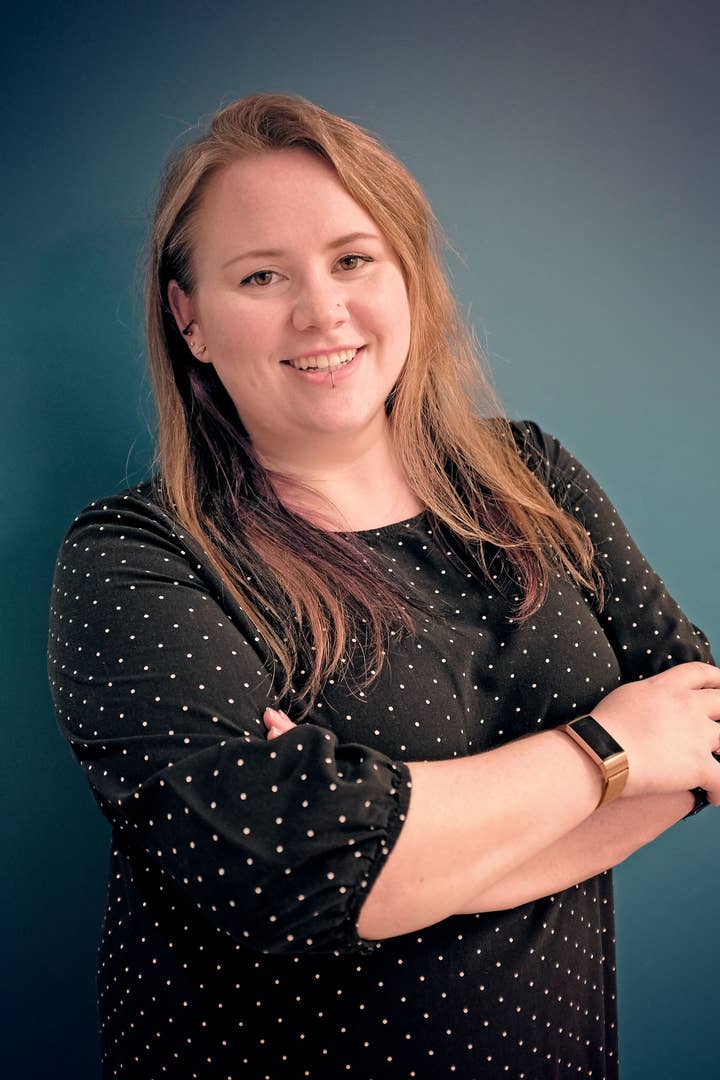How to identify and avoid unconscious bias
The GamesIndustry.biz Academy explores the effect of unconscious biases on the workplace, and how you can steer away from them and towards diversity
Unconscious bias affects people everyday, whether they realise it or not. Whether you're on the receiving end or the one making the assumptions, these quick judgements are an unfortunate part of daily life, both professionally and personally.
The Facebook Unconscious Bias course defines unconscious bias as "attitudes or stereotypes that affect our understanding, actions, and decisions in an unconscious manner." It's shaped by years of internalised experiences and our natural tendency to categorise.
Cinzia Musio is operations project manager and diversity board member at Splash Damage. She also runs unconscious bias workshops for the company's staff, and likes to remind people early on where unconscious bias comes from.
"The fact is awareness of unconscious bias is not enough. Real change comes from actionable steps"
Liz Prince, Amiqus
"When we were primitive humans, if you had something coming at you, you didn't have time to consciously go: 'Does that thing have teeth? Is it growling?'," she says. "If you did all those judgments in that order, you'd be dead by the time they came to you. We had to make snap judgments and decisions as to assert whether something is dangerous or not. And it became a part of us, where we make up snap judgments based on what we know is safe, from what we've seen around us."
Unconscious bias is all about comparing the world around us to what we perceive as the norm. The consequences can be devastating on a person's career, and more often than not it affects people from underrepresented backgrounds and genders, preventing them from finding jobs or leading them to experience more difficulties once at a job.
Keep in mind that stereotypes are self-fulfilling as well: if you think that you're at a disadvantage in a situation you're unlikely to put yourself out there. As a result, the responsibility falls on companies to make sure they're inclusive, otherwise it creates a vicious circle.
Unconscious bias also has negative consequences for business, which we'll cover at length in this article. It can introduce unintentional discrimination, result in poor decision-making, and be a huge setback in creating a truly diverse and inclusive workplace.

"If you've hired people who like the same things as you, who listen to the same music as you, wear the same clothes as you -- it's tricky to see why you should need to actively look to create a more diverse workplace within your business," says Liz Prince, Amiqus' business manager and founder of Putting the G Into Gaming. "But statistics prove that diversity drives creativity and increases productivity.
"The fact is awareness of unconscious bias is not enough. Real change comes from actionable steps -- planning for change and identifying the focus areas for your business is key to progress. It's useful to make commitments or to pledge to make change for better, but to achieve those goals needs an understanding of how to change."
That is the aim of this guide. How do you identify unconscious bias? How can you ensure that it doesn't affect your recruitment process or your existing staff? What can you do if you witness unconscious bias where you work?
Take the Project Implicit test
A good tool to help you understand your unconscious biases is Project Implicit. This initiative created by Harvard University researchers assesses "your conscious and unconscious preferences for over 90 different topics." It's a great place to start, it only takes around 15 minutes, and you may be very surprised by the results.
"It's a test where you have words and you have to associate them with one thing or the other, for example female/male and career/family," Musio explains. "At the end it tells you whether you have an unconscious bias and how strong it is. So it's a really, really interesting test to do."
"It's about being able to look at the impact of unconscious bias and take action"Cinzia Musio, Splash Damage
Project Implicit is an invaluable resource for showing the reality of unconscious bias. Between 1998 and 2010, 70% of the test takers associated men with science and women with the arts, 75% had an implicit preference for white people over black equals, and 76% had an implicit preference for not visibly disabled people.
Educate yourself and find external partners who can help
A lot of people underestimate the impact of unconscious bias, so one of the first steps is to inform yourself.
"It's the discovery phase," Musio says. "It's looking at data, looking at case studies and analysing them as a group to see what impact that has on society. And once we have that we can look at taking action. The most important thing I hope people get out of [my workshops] is an understanding of what unconscious bias is. So if they're in a meeting and someone from an underrepresented group gets interrupted, they can be more attuned to deal with this."
Partnering with an external partner can help. If you're overwhelmed by the information available or don't know where to start, consider working with companies such as Amiqus or G Into Gaming.
"I keep up to date with research to make sure we are in a position to help studios understand how to be aware of how to de-bias not only their people, but most importantly their processes," G Into Gaming founder Liz Prince says. "The whole concept behind the GIG initiative is to help those companies, by providing them with guidance throughout every step of their diversity and inclusion journey -- and that often starts with tackling unconscious bias."
Studio Gobo and Electric Square have chosen to partner with Brighton-based company DnA (Diversity and Ability).
"DnA has organised a whole journey of different workshops with us, championing neurodiversity and disability inclusion through technology, training and talent," says Guy DeRosa, head of talent at Studio Gobo and Electric Square. "Companies such as DnA are valuable in educating companies on how to eliminate the barriers the industry typically has in place."
Hangar 13 actively supports diversity groups in the industry such as BAME in Games and Women in Games, and has followed up by creating internal groups to champion positive change.
"Our employees can share viewpoints, ideas, and best practices on an ongoing basis, with ways we can continue to improve our diversity and avoid any unconscious bias that may still exist," says operations director Rebecca Sampson.
Run unconscious bias workshops, but make attendance voluntary
The next logical step is to run your own unconscious bias workshop, or seek places where you can attend one. You should at least get that conversation started with your staff.
"We encourage managers to attend and participate in such programs," Sampson says. "We recently had workplace awareness sessions to ensure staff are more aware of their social surroundings, and of how perceptions and interpretation of actions can be different from one person to another."
"If you force people to do unconscious bias workshops, it ends up being less productive"Cinzia Musio, Splash Damage
Cinzia Musio has four rules during her unconscious bias workshops, which can be very useful advice even if you just run an informal meeting:
- There is no such thing as a dumb question
- Assume positive intent
- Confidentiality
- Technology-free space
"I found that these four rules make things a lot more productive," she says. "It reminds people that everyone in the room is there for the right reasons: to make the studio a better place, especially 'assume positive intent.' It just changes the conversation. People are less likely to get defensive when you do that."
Over 100 people at Splash Damage have attended Musio's unconscious bias workshops, which represents about a third of the studio, and she has found that they work better when people join on a voluntary basis.
"A lot of studies find that if you force people to do these things, it ends up being less productive," she says. "Doing it volunteer-based means those people are going to get there because they want to learn. They're gonna take that information and start talking about it around them. It creates that ripple effect. If you force people in, they're gonna start questioning everything. It ends up being non-productive, and you can't assume positive intent."

Look for the cultural add, not the cultural fit
Unconscious biases can often surface during recruitment. You may naturally be more forgiving with someone who looks like you, or who attended the same university. With the games industry still largely dominated by white men, this can very quickly create a vicious circle.
"When hiring, we often look at who has done the role before and who has been successful at it, but we have to be careful about perpetuating stereotypes," Prince says. "We have to be especially careful about using the same benchmarks, tests and judgments, because they could be excluding people from important roles. Remember to ditch the cultural fit and look for the cultural add. Target non-traditional routes for hiring and look for a wide array of backgrounds."
If you're unconvinced about the necessity to do this or still believe that unconscious bias hasn't affected your recruitment process, Cinzia Musio has some figures for you.
"Studies of identical CVs, one with a man's name and one with a woman's name, found that 79% of applicants with a man's name versus 49% of those with a woman's name were worthy of hire. Just changing the name on the CV, with the same CV, made a big difference.
"Resumes with white-sounding names receive 50% more calls for interviews than the same resumes with an [African-American]-sounding name. A 'white name' is equivalent to about eight more years of experience."
"A 'white name' is equivalent to about eight more years of experience" Cinzia Musio, Splash Damage
Gender and race have an impact on perception of competence and ability. Underrepresented groups are often not granted the same opportunities, are held to stricter or higher standards, and hired and promoted based on what is proven and achieved. White people and men are more often hired and promoted based on potential.
"There's also this idea of assuming someone's performance without them proving it," Musio adds. "Like thinking that engineers are smarter and more analytical. Or that native English speakers are easier to work with. Or that younger people are more open to new ideas. The idea that your performance is defined by who you are, rather than what you've proved [you can do]."
Rethink your job ads and do blind reviews for CVs
Job ads often include a lot of unconscious bias. There are tools that can check the language, such as the Totaljobs Gender Bias Decoder, but many others exist out there.
"Hangar 13 uses non-gender specific language in all of our job descriptions, as well as limiting the number of 'must have' and 'essential' requirements for applicants to apply," Sampson says. "We understand, following on from recent gender reports, that women are more likely to apply for a job if they feel they meet 100% of the desired criteria compared to men, who will apply if they meet 60% or more."

Non-gender specific language matters. It doesn't cost anything to use, and it makes a huge difference to the people affected. Prince adds that you should be looking for skills and capability as opposed to a person type, and as you start receiving CVs for a role, you should consider doing a blind review of the candidates.
"Make the job description your contract with yourself, because you're going to use that document to control your unconscious bias later in the selection process," she says. "Create a tick-list from the job description, then take information off CVs for a blind review - i.e. name, photo, personal stuff, university. Make a scorecard for each CV versus the job description."
Musio adds: "[Blind evaluations] are a good thing because it will increase chances for underrepresented groups to come through the door. Make sure that the objectives are the same for everyone at that level, and that you're not judging people on a case by case basis, but rather trying to make it as data driven as possible."
Have diversity among your recruiters during interviews
When it comes to interviews, make sure that the people sitting down to evaluate candidates don't all look the same -- a diversity of backgrounds and opinions is always encouraged as a way to counteract potential unconscious bias.
"We try to make sure there's a reasonably diverse group of people in the recruiting process, so that we're not just having a bunch of 30-something white guys in all the interviews," says Mark Stephenson, people director at Mediatonic. "We try to mix it a little bit so that we do get different perspectives."
"We try to make sure we're not just having a bunch of 30-something white guys in all the interviews" Mark Stephenson, Mediatonic
Musio adds that it's important to set standards in advance. For instance, have a set of interview questions that you ask people all the time.
"We have a cultural side during interviews, to figure out whether the person will be a good addition to the culture in the studio and we have a very clear set of questions that everyone asks," she says. "When you get to a point where everyone is asking the same questions during interviews, it's very easy to make it analytical.
"If you have a certain feeling about someone, give yourself a justification as to why you're feeling that way and understand whether it's just a snap judgement or whether you actually have something to back it up. It's good to write as much detail as possible [during] the hiring process, so that you're not just relying on memory."
Lead by example and include everyone in the process
If you're in a senior position, it is absolutely crucial to lead by example, and keep diversity and unconscious bias in mind at all times.
"It's really important that you get buy-in from the top, because that's really how you're going to affect changes -- it's really hard to do from bottom up," Stephenson says. "Rather than diversity being an afterthought, you should get to a point where it's built into your decision-making constantly. People always consider money and time, and I think that diversity's got to be part of that as well."

You should also encourage the entire company to get involved, so they can better understand your decisions.
"Engage everyone in the focus on bias, look for everywhere that bias can occur and work on processes to thwart it, review them regularly," Prince says. "Encourage a positive working environment where employees feel pride in supporting others, and are rewarded for actively demonstrating a will to overcome such biases and acting to increase diversity in the workplace. Set goals and measurements to stay on track."
DeRosa adds: "In my experience, once people understand how crucial diversity and inclusion is, the subsequent processes are so much more fluid. It's much easier when you're pushing forward as a team."
Make sure everyone has a platform to express their concerns
In order to involve your staff in the process, you need to make sure you provide the right environment for everyone to feel heard. That can be a portal where they can send feedback or ask questions, or a member of staff that's trained to help.
"[Hangar 13] makes sure that everyone knows they have a platform in which they can voice their opinion, be heard as an individual and not be judged," Sampson says. "We encourage honesty, but also ensure that respect goes hand in hand with that. People can speak their minds, but they should do so in a constructive, non-toxic way, which doesn't overstep any professional boundaries."
"Respectfully challenge others' behaviour, calling out bias when you see it"Liz Prince, Amiqus
Prince continues: "Get to know your teams and colleagues: do people feel empowered to speak up, valued for their contributions and embraced as a result of their diverse identities? If not, how can you modify your behaviour? Certain workplace behaviours such as bullying can be a result of implicit biases, and often legally it is hard to prove and tackle. Enabling solid processes for reporting anonymously will help."
Call out inappropriate behaviour
Highlighting any language or actions that show unconscious bias is key to reducing its impact. It isn't easy to correct people, but it needs to be done to raise awareness of the issue.
"Be courageous in calling out exclusionary behaviours in others, and ask others to help you by being a critical friend," Prince says. "Respectfully challenge others' behaviour, calling out bias when you see it."
Musio has a wealth of advice when it comes to knowing how best to react. Meetings, for instance, are a situation in which unconscious bias flourishes, so you need to set ground rules and norms to ensure fairness.
"Having a meeting etiquette is really important," Musio says. "So no interruptions, letting everyone speak. If not: interrupt the interrupter. A lot of the time, interrupting the interrupter and saying 'I'd like to hear what that person has to say' can actually really push you forward."

'Interrupt the interrupter' is part of various techniques Musio touches upon during her workshops. She also uses a document called "Eight ways to speak up." You can read it all here.
"You'll often find that someone finds a woman is difficult to work with, and when you ask them to give you examples, they are things that would be seen as normal if it was anyone else," Musio continues. "So it's about pushing back, and trying to hold people accountable to their own unconscious bias."
Hold yourself accountable and review your processes regularly
Whether you already have processes in place or you're only just getting started on your journey to inclusivity, it's important to evaluate these solutions on a regular basis.
"One of our core values is constant improvement, and the team here is really good at consistently looking at the progress we've made and what could be done still," says Haley Uyrus, marketing manager at Mediatonic. "Whether it's mental health awareness or unconscious bias training, we're always looking at what we've done so far, what we can still do.
"It's easy when things are so busy to do one thing and be like: 'Okay, sorted.' But really, it's something that should be analytically looked at year-on-year, to see how there's actual steps to keep improving it."

Question the value of meritocracy
Meritocracy is often waved around as the ultimate justification for a company's workforce lacking diversity. But it's not necessarily the good practice many people seem to think.
"A lot of studies have found that companies that say they're meritocratic are overall more likely to have biases and less diversity in leadership," Musio says. "If you think that you're a meritocracy, you're not going to be looking at improving anything. You're not going to be looking at your numbers in terms of representation and why that representation is, because you think that everyone is there because they deserve it.
"That kind of idea of meritocracy can be quite harmful to progression, because you're never going to be questioning whether you're doing things in the right way and whether or not it could be better."
Rotate office housework
An idea we touched upon already is 'competence versus likeability', a bias where people from underrepresented groups are seen as either effective or likable, but not both.
"For example, women are seen as being communal, nice, submissive and warm," Musio says. "If women stray away from those qualities, then you're going to be seen less effective. The impact with this is having to produce results makes it harder for women and underrepresented groups to get hired and promoted, to negotiate on their own behalf, to exhibit decisive leadership, and also to avoid more office housework."
Office housework is the idea of non-promotable tasks -- taking notes in meetings, organising lunches, organising birthdays.
"They're basically non revenue generating work, with low risk and low reward, but they take a lot of time," Musio says. "Volunteering constantly for non-promotable tasks can stifle your career progression, because you end up being seen as doing the more junior menial tasks effectively.
"Who would want to work in a place where everyone had the same personality, viewpoints and ways of thinking?"Rebecca Sampson, Hangar 13
"[You need to] rotate office housework. Rather than getting someone to volunteer, have a system. If you're going to meetings with the same group of people, then one person is starting to take notes, and then the next meeting it's another person's turn.
"It's important because if you always have the same person taking notes, they're not going to get a chance to share ideas. And if it always comes from underrepresented groups, their voices end up being heard less."
Give equal parental leave
Another type of bias is maternal bias, which is the belief that women are either a good employee or a good mother. This also includes the bias of 'potential motherhood' -- getting engaged, getting married, turning 30, talking about kids.
"If you're just saying you hope to have children in the next five years, then it can start triggering that and giving you less opportunities," Musio explains. "And it works the other way, too. If you don't want to have children at a certain age, or when you're married, it becomes a thing. 'But why? How do you know you don't want to be a mother?' Which is never a question when it comes to men.
"The impact of this is obviously career opportunities. Parents will be given less opportunities [against child-free or single men]. First of all, don't make assumptions. Don't make assumptions that women are limited in their commitment, or their ability to travel or take a new assignment.
"Encouraging men to take their full paternity as well is really, really important. It's the thing that convinced me to join Splash Damage -- we have equal parental leave for everyone. It's about normalising that time, that it's okay for all parents to be taking time off, that it's not reserved to just mothers."
Remember: diversity makes money
If you nail down the right processes to avoid unconscious bias, this should naturally lead to a happier and more diverse workforce. And there are many advantages to this.
"Diverse and inclusive workforce demonstrates 1.12 times more discretionary effort, 1.19 times greater intent to stay, 1.57 times more collaboration among teams, and 1.242 times greater team commitment," Musio says, quoting research from CEB Global and Talent Innovation. "And at firms with diverse leaders, employees reported to be 60% more likely to see their ideas developed and prototyped, 75% more likely to see their innovation implemented, 70% more likely to capture new markets in the past year, and 45% more likely to have increased market share in the past year. So basically, diversity makes money."
Having an array of unique individuals in your company, all with their own personalities, backgrounds and skillsets, is an asset you shouldn't underestimate. It's one of Hangar 13's ideologies: differences make the studio stronger.
"Everyone has their own way of thinking, processing problems and coming up with solutions," Sampson says. "Diversity helps to both create and solve challenges, which ultimately helps push the boundaries of what can be achieved to allow for greater results. It also makes it an incredibly fun and interesting environment to work in -- who would want to work in a place where everyone had the same personality, viewpoints and ways of thinking?"
Cinzia Musio has put together a document summarising her workshops, which you can read here, so you can always have all the actionable points mentioned in this article at hand.

